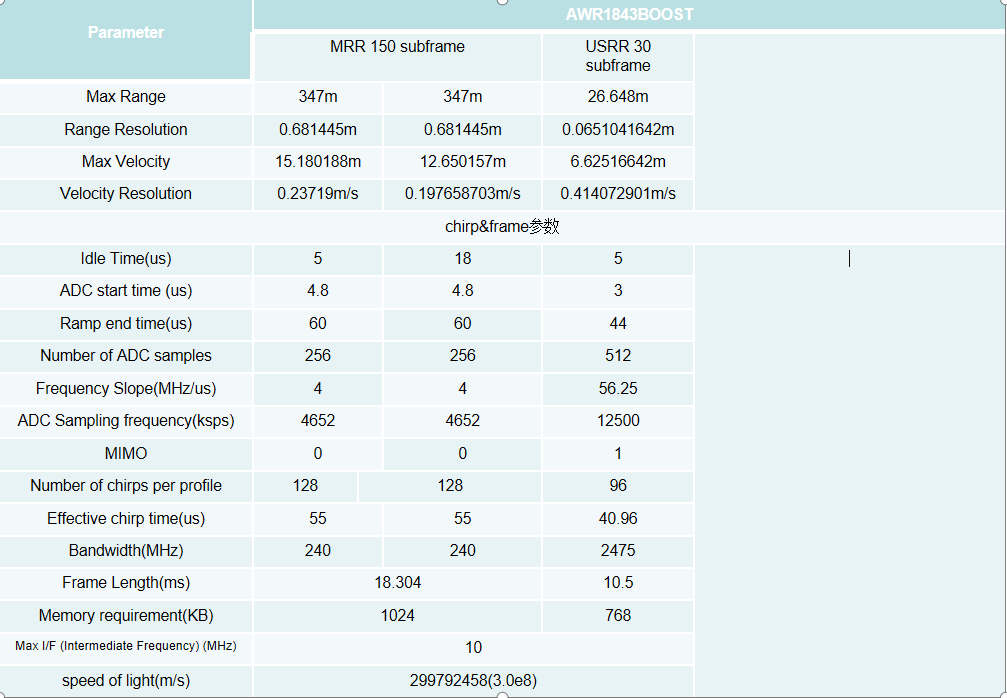Tool/software: Code Composer Studio
1.effective chirp time = (number of ADC samples) / (ADC sampling frequency) ,If not, what is it?
2.bandwidth = (ramp end time) * (frequency slope),Why is the bandwidth of USRR 3456? If not, what is it?
3.frame length = (chirp idle time + chirp ramp end time) * (number of chirps per profile),Why is the frame length of USRR 10.5?
For a slow chirp, have you considered its chirp idle time?
If not, what is it?
4.How is the memory requirement calculated?






